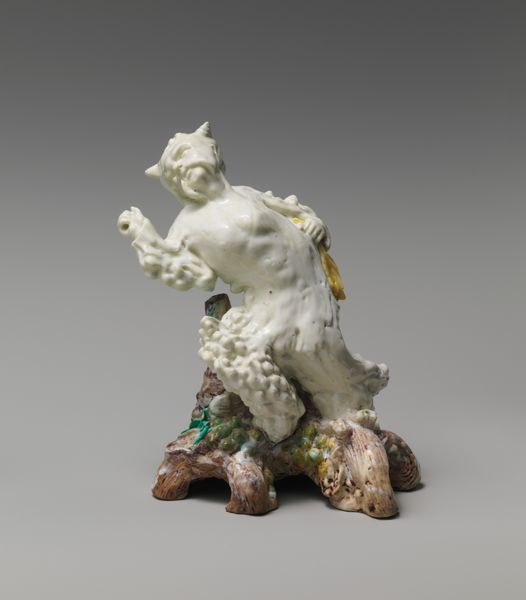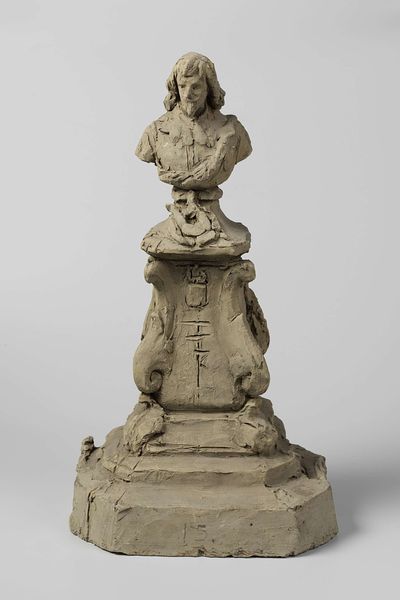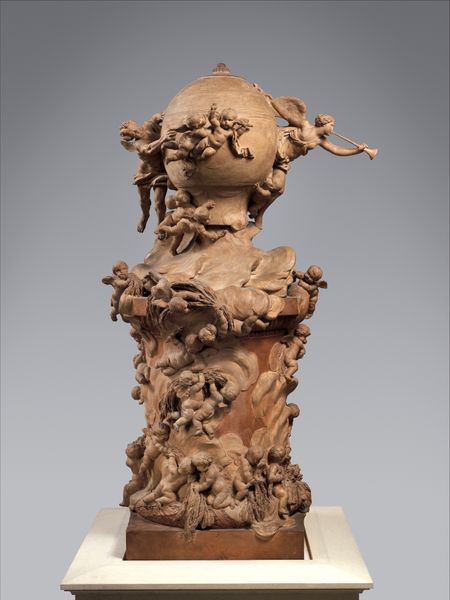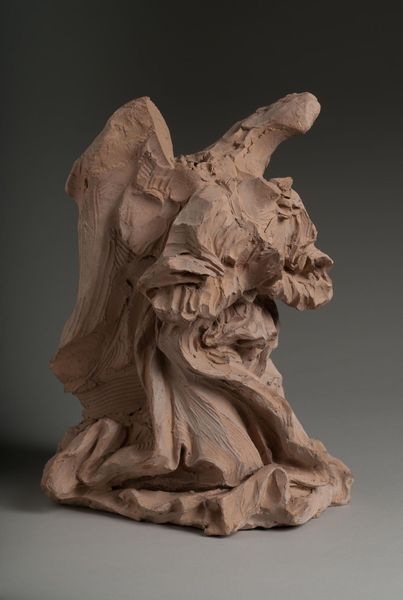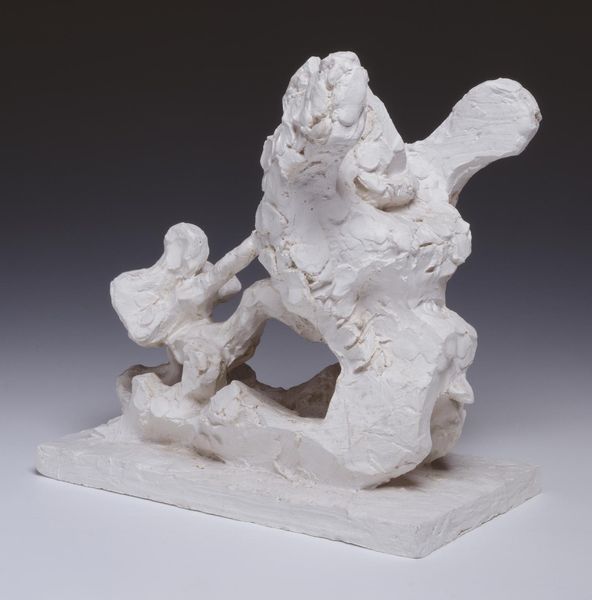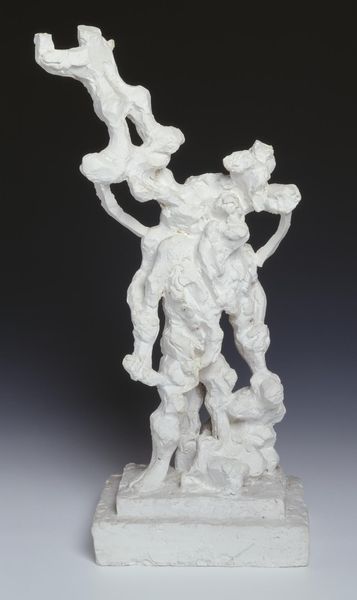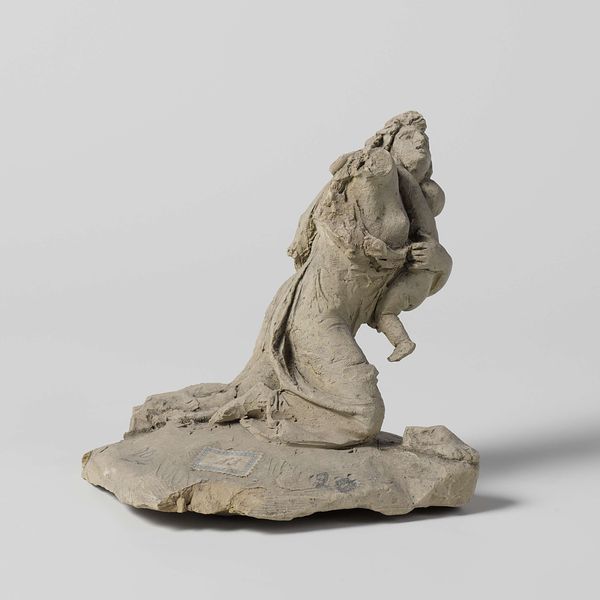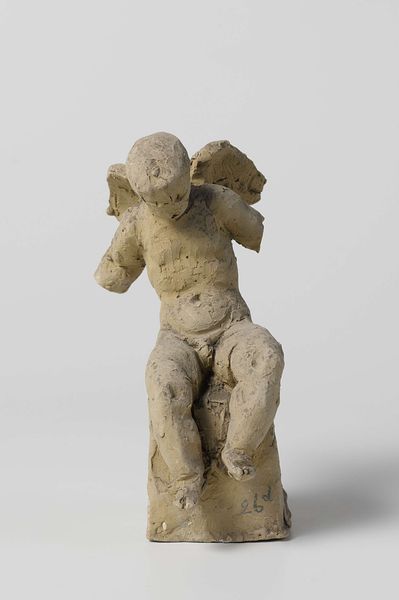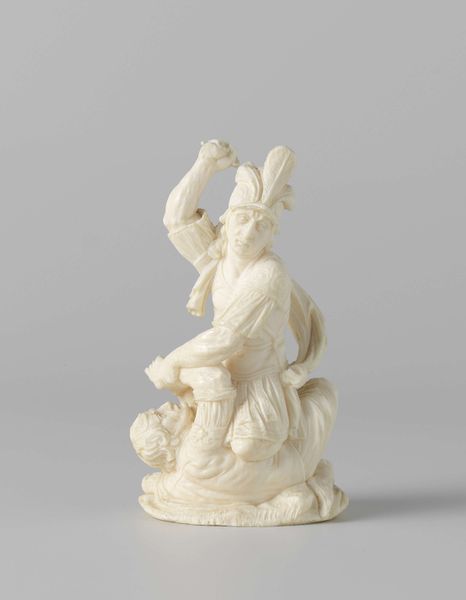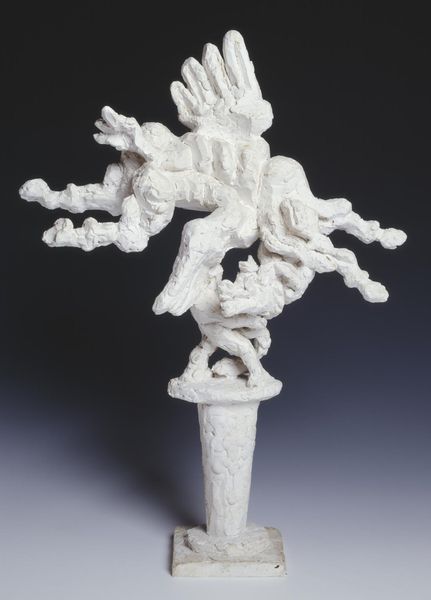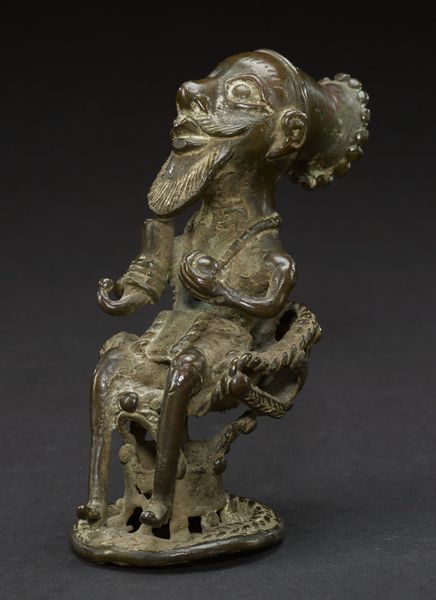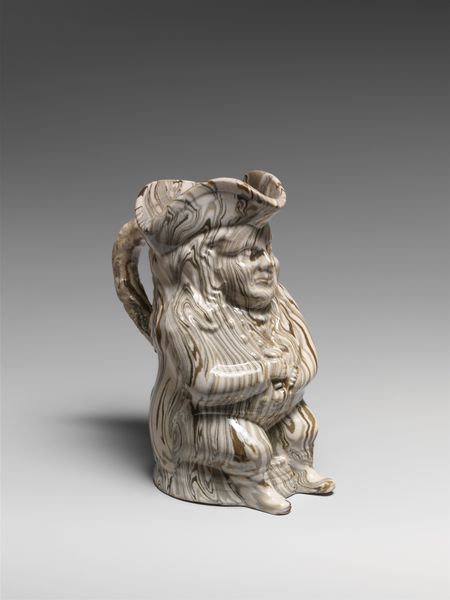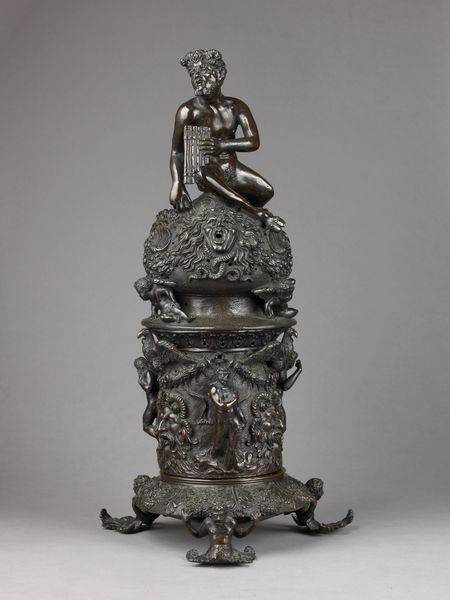
Medaillonportret van een man, op imitatie-rotskoralen standaard 1741
0:00
0:00
relief, sculpture
#
portrait
#
baroque
#
sculpture
#
relief
#
sculpture
Dimensions: height 32.5 cm, width 16.7 cm, depth 12.5 cm
Copyright: Rijks Museum: Open Domain
Curator: Immediately, I notice the rough texture and somewhat melancholic palette. It projects a kind of strange austerity. Editor: Yes, well, this is "Medallion Portrait of a Man, on Imitation Rock Coral Stand," crafted in 1741 by Jean-Baptiste (de Jonge) Janelle. It's quite the artifact. What grabs my attention, naturally, is how the material itself tells a story. Curator: Absolutely. This Baroque period sculpture invites contemplation about status and gender in eighteenth century society. What is this man’s place? We’re faced with questions of how men were positioned and chose to position themselves. Editor: Exactly! Imitation rock coral isn't just some neutral material; it's performative, loaded. It speaks volumes about trade and the consumption of luxury in that era, and class aspirations expressed through material possession. The “coral” almost serves to highlight this man's detachment from labor, while also reflecting it in that craft of imitation. Curator: I agree. It definitely raises questions about colonial exploitation. I'm curious to explore how coral—once vibrant marine ecosystems turned into objects of desire—parallels the exploitation of both human labor and natural resources within a burgeoning colonial project. What are the gendered dynamics embedded here? Does it serve to further portray masculinity as powerful, dominant even over nature? Editor: I think that’s astute. Then the portrait becomes a sort of monument to itself—not necessarily the person—it’s the idea of prosperity materialized, crafted to elicit specific reactions about power. The shells aren’t randomly scattered; the artist has chosen and placed each one with intent to elevate the primary image. Curator: Precisely. Seeing it this way adds another layer to consider about how art historically depicts powerful white figures that is both troubling and unavoidable. Thanks for unpacking this one with me. Editor: Thank you. Exploring the materials here helps connect this portrait to larger stories of making, labor, and value. I always leave an exhibition wondering, “how did this become what it is and what larger narrative does it occupy."
Comments
No comments
Be the first to comment and join the conversation on the ultimate creative platform.

